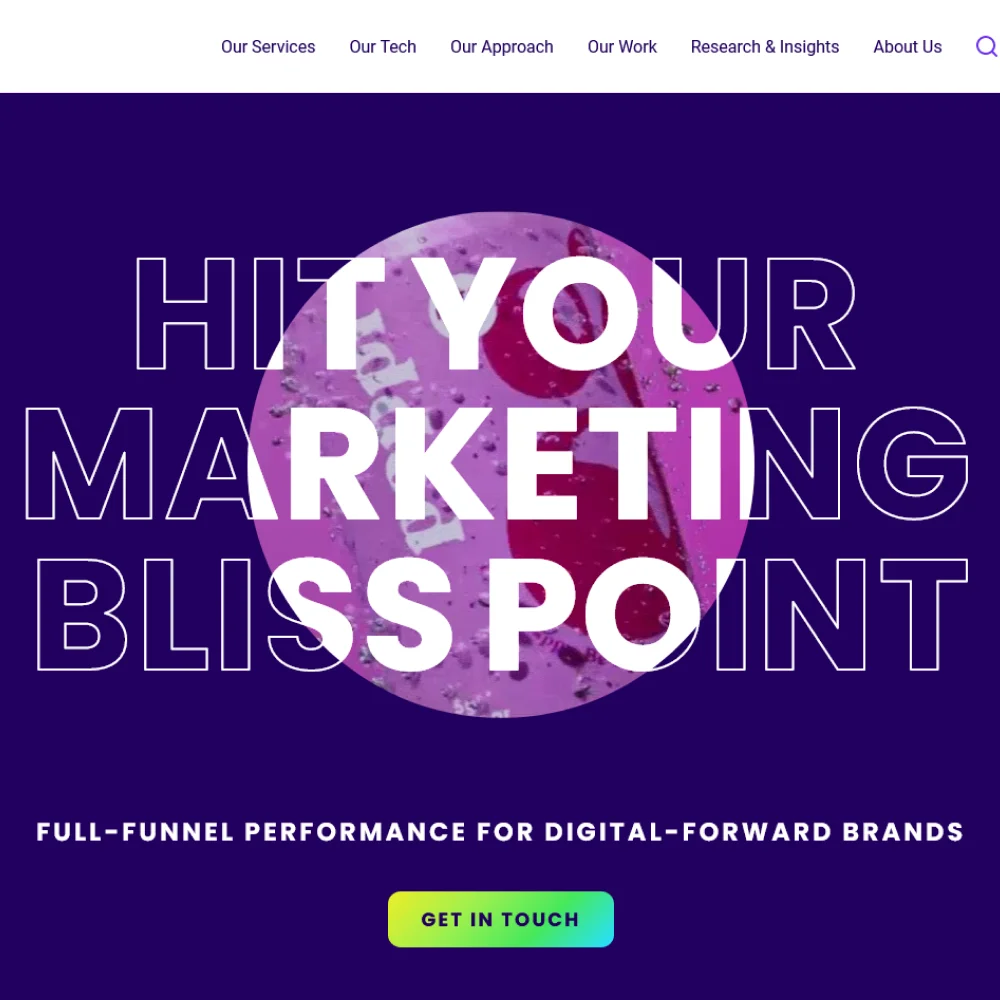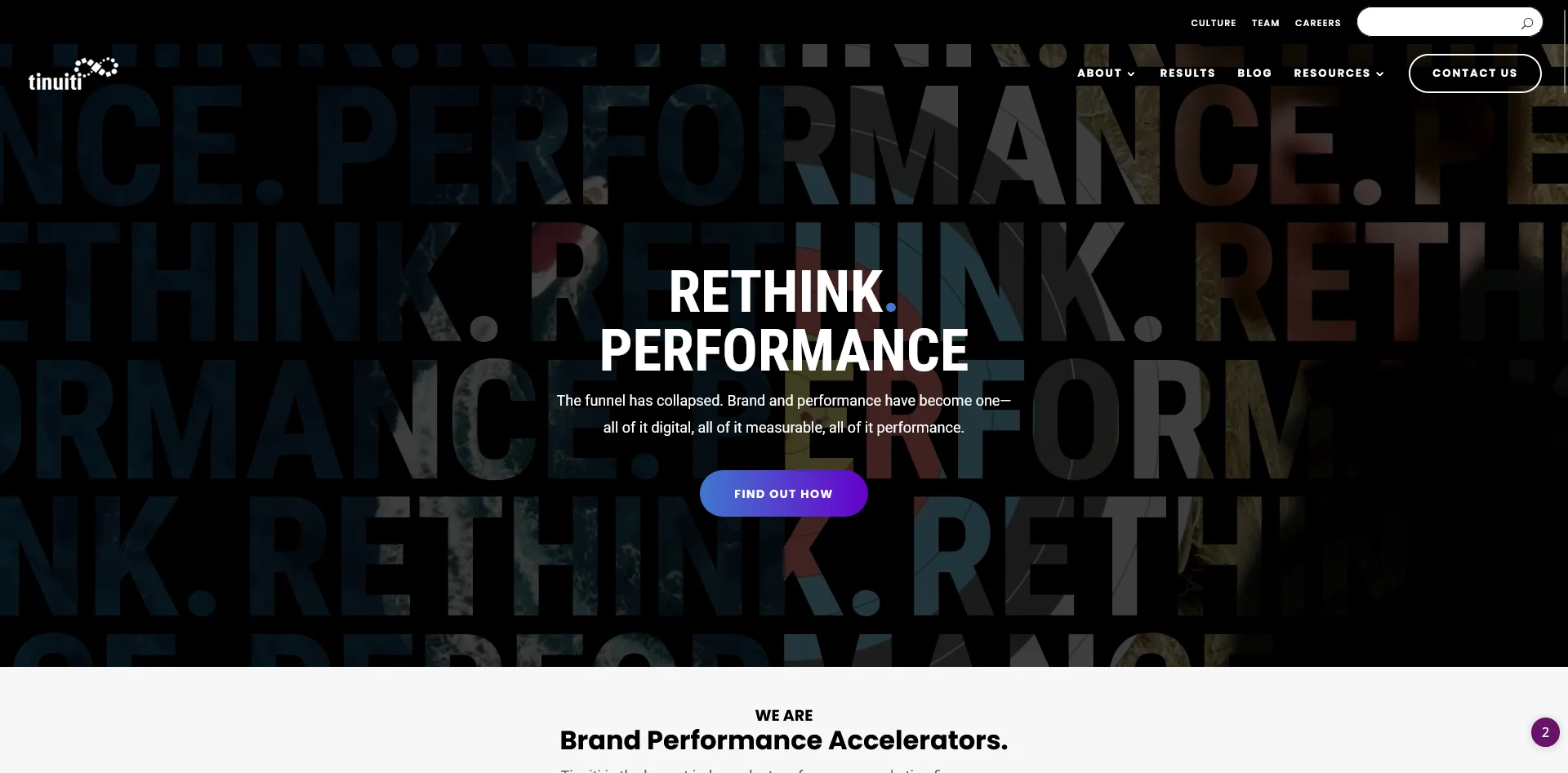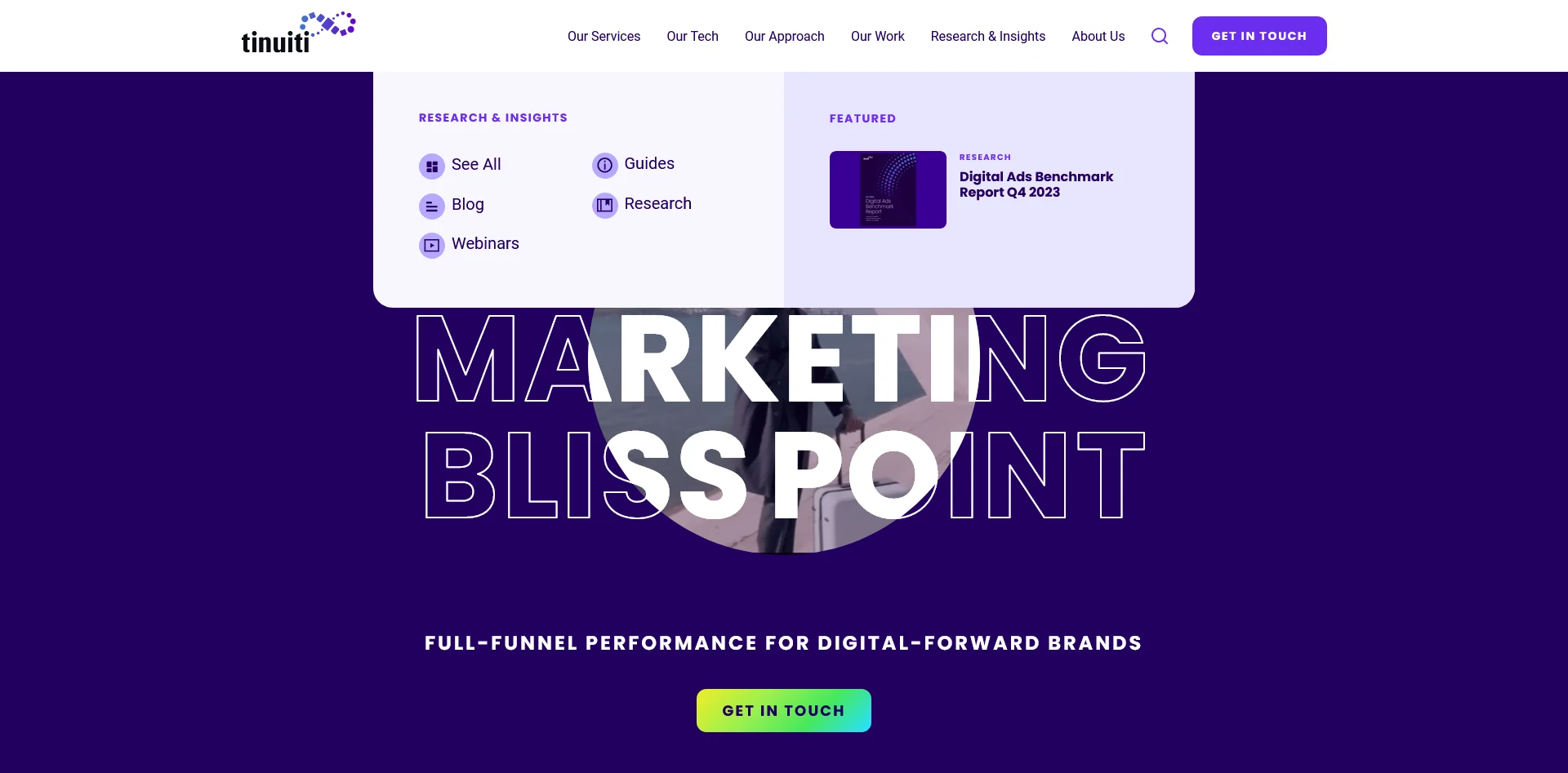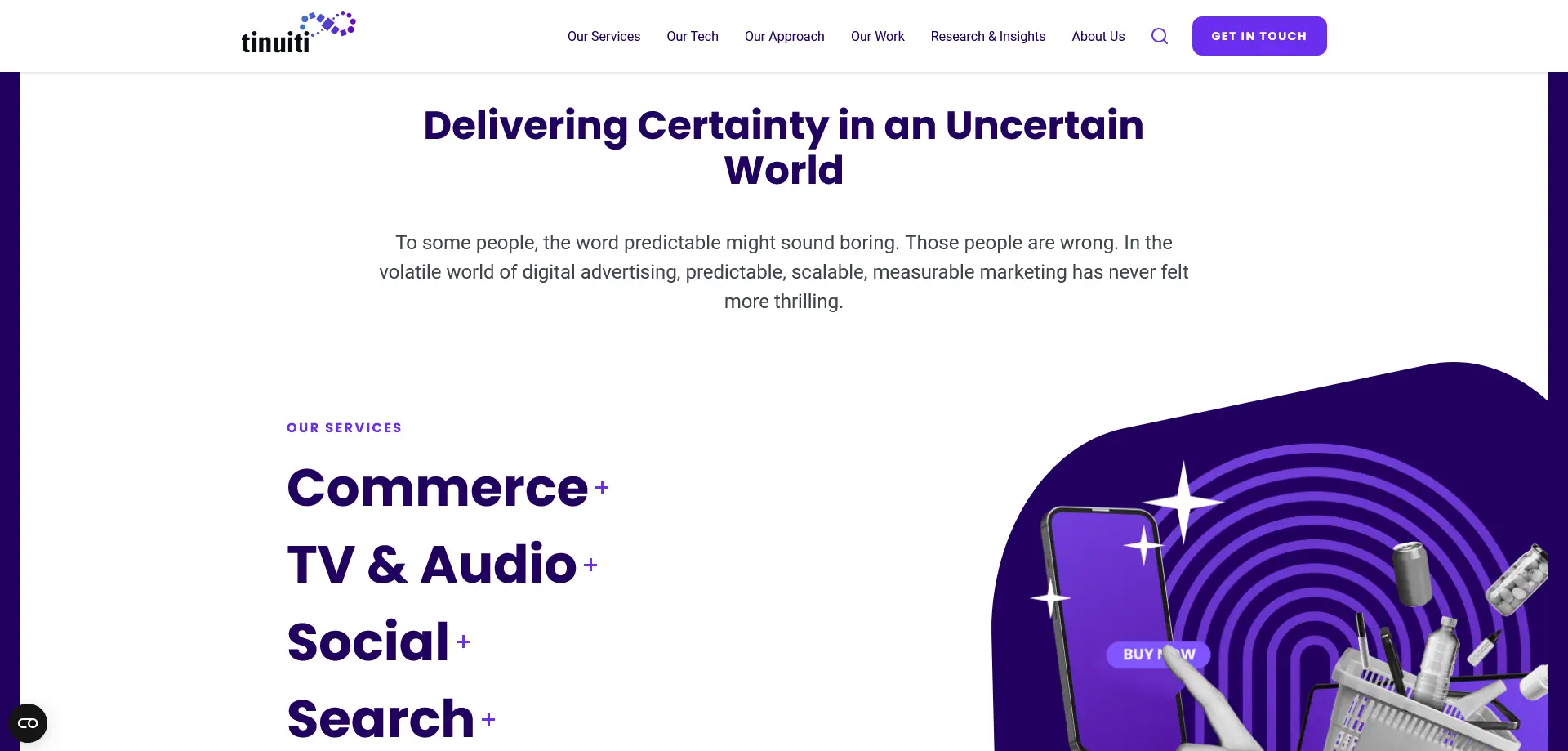Tinuiti
A full redesign from the ground up to allow the website to improve Core Web Vitals, UX, and workflows in order pave way for an updated look to the brand and messaging.

Revamping A Failing Website
Tinuiti.com had an outdated, clunky website that was failing Core Web Vitals, had poor UX, and was difficult to update across teams.
As the in house web developer, my goal was to rebuild the site to meet modern performance standards, improve UX, and establish a scalable system for future gportfolio-row rowth.
I led the front-end redevelopment using lightweight, modular code and implemented lazy loading, image compression, and improved CSS/JS delivery. I also worked with designers to simplify navigation and make content more accessible.
After relaunch, the site passed all Core Web Vitals, reduced average page load time by over 35%, and user engagement increased due to better UX. It laid the foundation for stronger organic performance.

Laying the Technical SEO Foundation
The original website had inconsistent heading structures, bloated code, and minimal meta data control—all hindering organic visibility.
Part of the redesign goal was to build a clean, SEO-friendly architecture from the ground up.
I ensured all templates used semantic HTML5, created reusable components that enforced proper heading hierarchy, implemented schema.org markup, and built in fields for meta data control within the CMS.
This helped increase crawlability and improved keyword rankings over time, while also making future SEO updates much easier for the marketing team to manage.

Improving Cross-Department Collaboration
Prior to the redesign, the site was hard to update, which caused friction between departments, especially marketing, design, and dev.
My goal was to create a more intuitive CMS experience and streamline collaboration workflows.
I restructured the WordPress backend with custom blocks and repeaters that empowered non-technical users to build pages without breaking layouts. I also participated in workshops with content, SEO, and design teams to align on needs and functionality.
Content updates became significantly faster and required less dev support, enabling more agile marketing campaigns and content rollouts.

Long-Term Optimization and Iteration
Even after the initial redesign, we wanted to ensure the site remained fast, user-friendly, and SEO-optimized as content grew.
I was responsible for ongoing improvements and performance monitoring of the website analytics and site health.
I regularly ran Lighthouse audits, monitored Core Web Vitals in Search Console, and adjusted code and infrastructure accordingly—such as deferring non-critical scripts, implementing critical CSS, and reducing third-party dependencies.
The site maintained passing scores in Core Web Vitals and saw consistent improvements in organic traffic and reduced bounce rates year-over-year.

Scaling for Growth and Future-Proofing
The old site lacked scalability and flexibility for evolving marketing needs.
I needed to architect a solution that would allow the marketing team to grow the site without frequent developer intervention.
I developed a modular design system using reusable blocks/components, made site-wide SEO settings accessible via the CMS, and integrated automation tools for performance and accessibility checks during deployment.
The website is now a flexible marketing platform, supporting everything from large campaign launches to quick SEO optimizations—all while maintaining performance and brand consistency.
